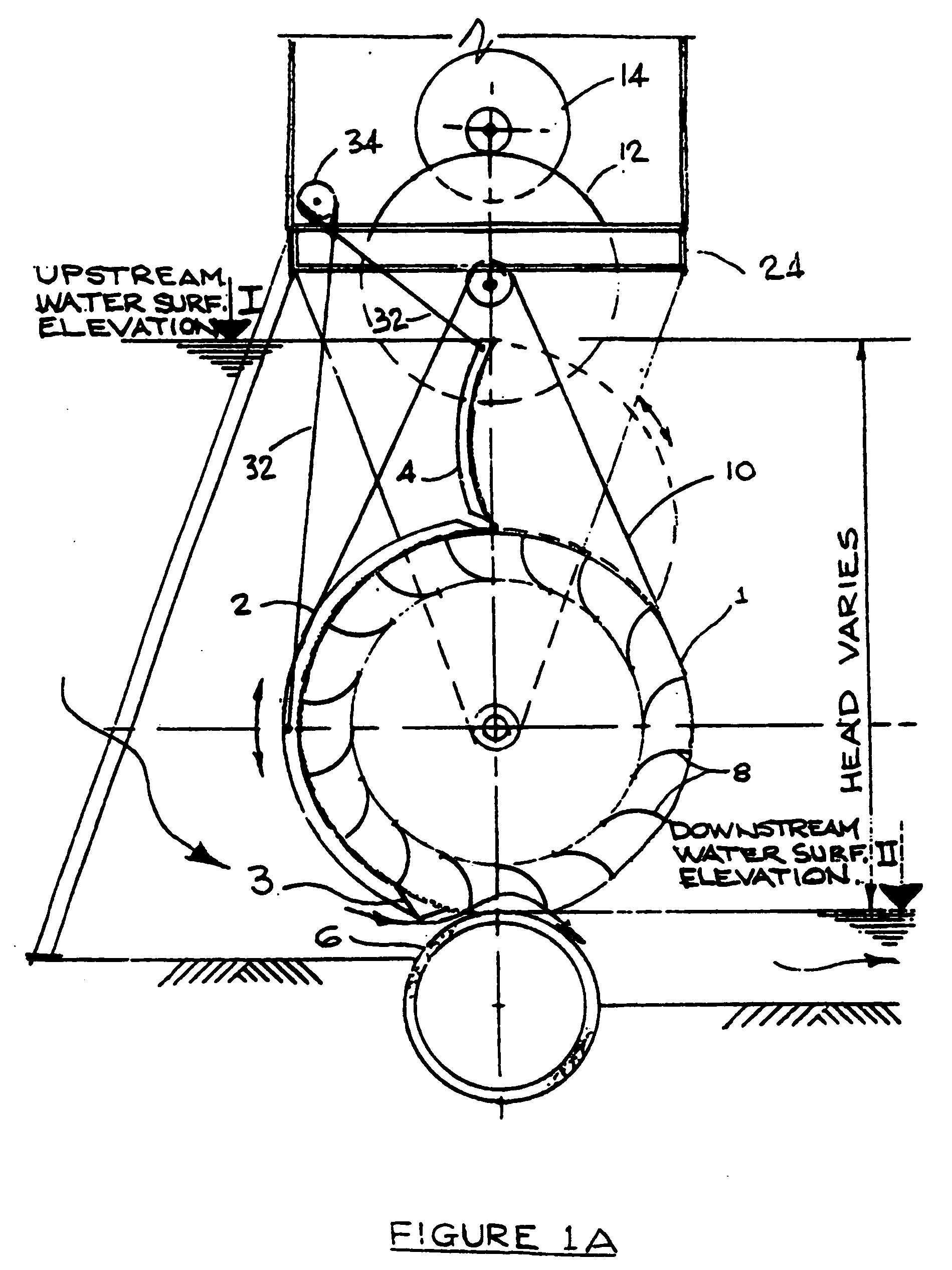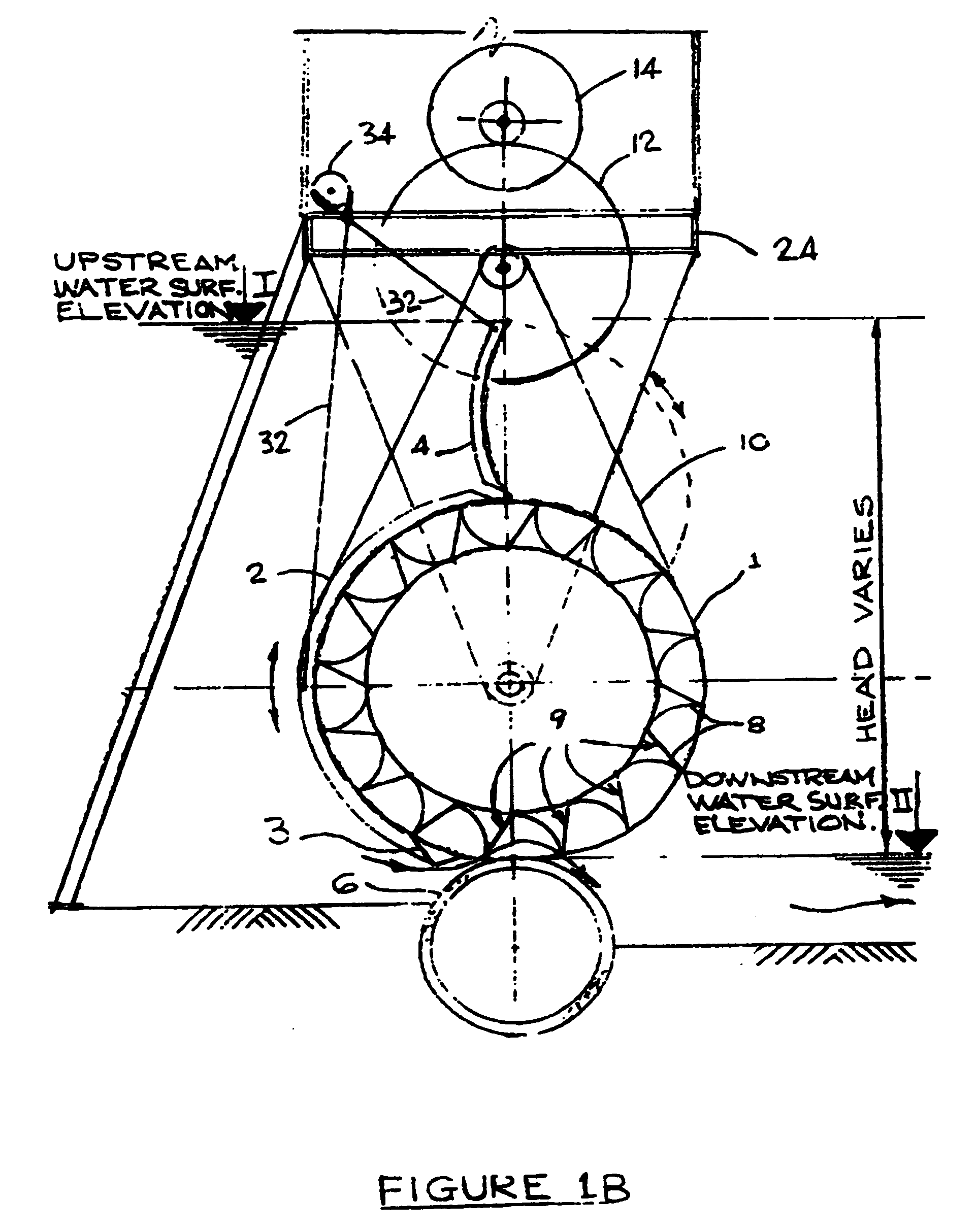Undershot impulse jet driven water turbine having an improved vane configuration and radial gate for optimal hydroelectric power generation and water level control
a technology of impulse-jet-driven water turbines and water level control, which is applied in the direction of rotors, vessel construction, greenhouse gas reduction, etc., can solve the problems of uncompetitive electricity generation at very low-head dams, lack of suitable equipment,
- Summary
- Abstract
- Description
- Claims
- Application Information
AI Technical Summary
Benefits of technology
Problems solved by technology
Method used
Image
Examples
Embodiment Construction
[0037]Design of the water turbine and vanes and the location of speed increaser and generator in coaxial arrangement within the hub of the water turbine are described in U.S. Pat. No. 5,440,175, “water turbine-Driven Generating Unit,” and in U.S. Pat. No. 6,208,037, “water turbine-Driven Generating Assembly,” which are incorporated herein by reference.
[0038]Referring to the drawings, FIG. 1A shows a water turbine comprising a rotor 1 with a radial gate 2, a moveable flap gate 4, and sole plate 6 for directing water flow together with the radial gate 2 into a plurality of vanes 8 disposed radially about the rotor 1. A chain drive 10 is coupled with a speed increaser 12 and spur gear arrangement that provides an appropriate speed for generator 14. Preferably the speed increaser 12 is an epicyclical sun and planetary gear arrangement, which takes the speed of rotation of water wheel 1 and converts it to a useful speed for the generator, for example 1800 rpm. The speed increaser can pro...
PUM
 Login to View More
Login to View More Abstract
Description
Claims
Application Information
 Login to View More
Login to View More - R&D
- Intellectual Property
- Life Sciences
- Materials
- Tech Scout
- Unparalleled Data Quality
- Higher Quality Content
- 60% Fewer Hallucinations
Browse by: Latest US Patents, China's latest patents, Technical Efficacy Thesaurus, Application Domain, Technology Topic, Popular Technical Reports.
© 2025 PatSnap. All rights reserved.Legal|Privacy policy|Modern Slavery Act Transparency Statement|Sitemap|About US| Contact US: help@patsnap.com



